The Role of Speech and Language Pathologists in ABA Therapy for Autism
Integrating ABA and Speech Therapy: A Holistic Approach to Autism Care
Introduction
In recent years, the collaboration between Speech and Language Pathologists (SLPs) and Applied Behavior Analysis (ABA) therapists has become increasingly integral in the treatment of autism. SLPs enrich ABA therapy by bringing their specialized knowledge of communication disorders to the team, enhancing the therapy's effectiveness for children with autism spectrum disorder (ASD). This article explores the crucial roles these professionals play in supporting autistic children through a balanced integration of behavioral strategies and communication techniques, aiming to answer key questions from those seeking comprehensive understanding of this partnership.
The Unique Role of Speech Pathology in Autism Treatment
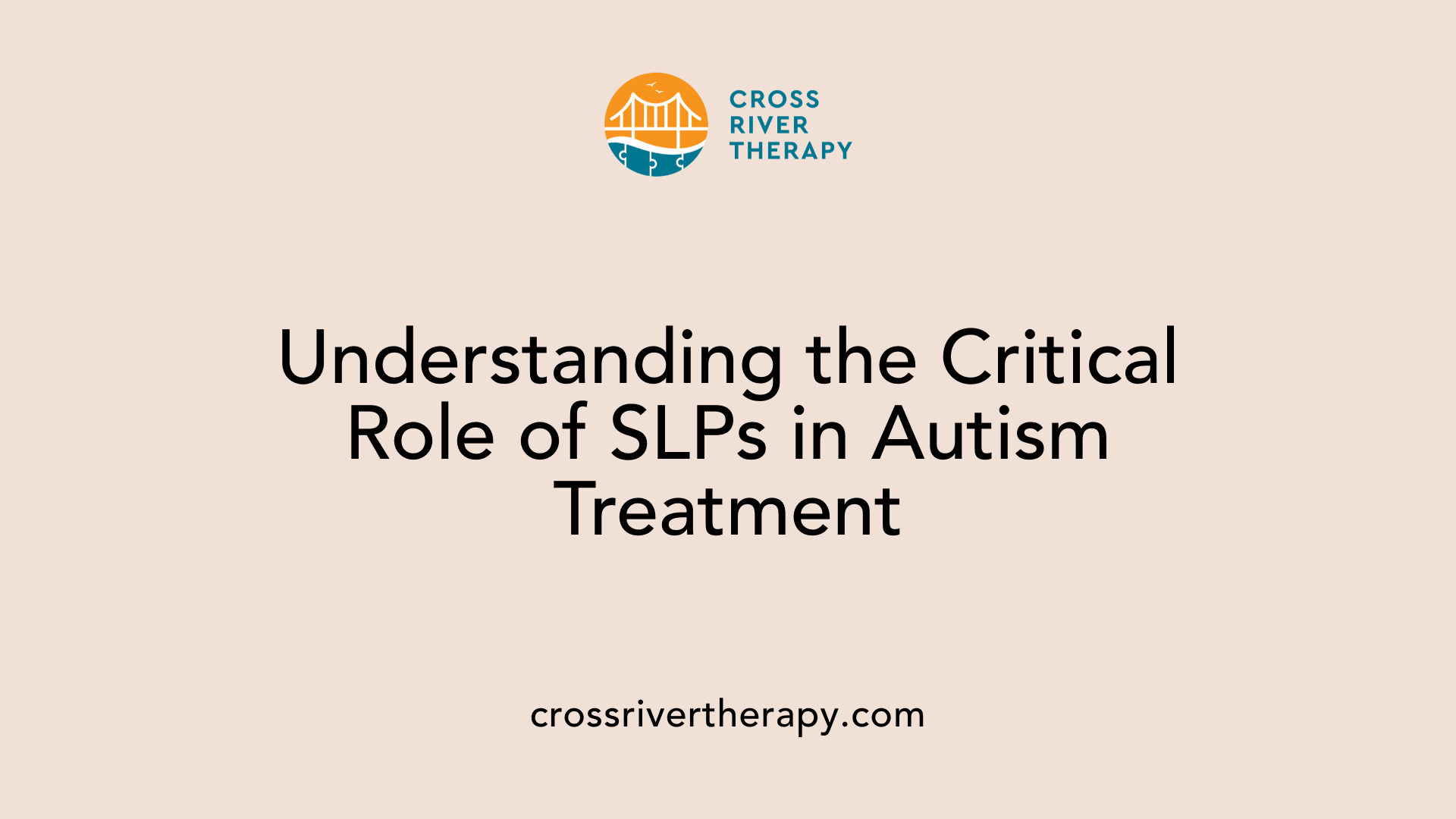
Role of SLPs in Autism Treatment
Speech-language pathologists (SLPs) are vital in providing therapy for individuals with autism, focusing on developing communication skills that are often challenging for this population. They are uniquely qualified, with advanced degrees and certifications in communication therapy, to assess and address the specific needs of individuals on the autism spectrum. SLPs are frequently among the first professionals to interact with children exhibiting early signs of autism, allowing for timely intervention and support.
Communication Skills Enhancement
The goal of speech pathology for autism is to enhance communication skills across various dimensions, including verbal, nonverbal, and social communication. SLPs evaluate each child's strengths and challenges to create tailored therapy goals. This may involve:
- Improving spoken language skills
- Teaching nonverbal communication methods, such as gestures or sign language
- Utilizing alternative communication systems like AAC devices
Furthermore, SLPs work to improve social communication by helping individuals learn to interpret and use social cues effectively.
Tailored Therapy Goals for ASD
Effective therapy goals are essential for fostering meaningful communication. SLPs often:
- Collaborate with ABA practitioners to integrate behavioral strategies with communication goals
- Create individual treatment plans that outline measurable objectives targeting specific communication skills
- Engage family members in the therapy process to ensure the skills learned are reinforced at home, thus enhancing their effectiveness in various environments.
This comprehensive approach ultimately empowers individuals with autism to express their needs and engage successfully in social interactions, significantly improving their overall quality of life.
Speech Pathologists as Essential Figures in Autism Care
What role does a speech pathologist play in autism treatment?
Speech-language pathologists (SLPs) play a pivotal role in diagnosing and treating Autism Spectrum Disorder (ASD). They are often among the first professionals to assess children showing signs of autism, utilizing their expertise in language delays for early intervention. SLPs conduct comprehensive evaluations, using standardized tests and observational methods to determine the individual communication needs of each child.
Diagnostic and treatment responsibilities
As part of a multidisciplinary team, SLPs help to diagnose autism while also mapping out personalized treatment plans. This involves targeting critical areas of development, such as:
- Social communication skills: Teaching children how to adapt language and nonverbal cues in various contexts.
- Speech production: Enhancing expression through improved speech sound production.
- Language comprehension: Helping children navigate conversational nuances and figurative speech.
These interventions are crucial, especially in the context of Applied Behavior Analysis (ABA) therapy, where integrating communication strategies can lead to more effective outcomes.
Family support and consultation
In addition to working directly with autistic individuals, SLPs provide essential guidance to families and caregivers. By educating them on communication strategies and reinforcing techniques at home, SLPs ensure a supportive environment that enhances the child's learning and development. This collaboration is vital for consistency and maximizes the effectiveness of both SLP and ABA interventions, resulting in significant improvements in communication skills.
Qualifications for SLPs in ABA Therapy
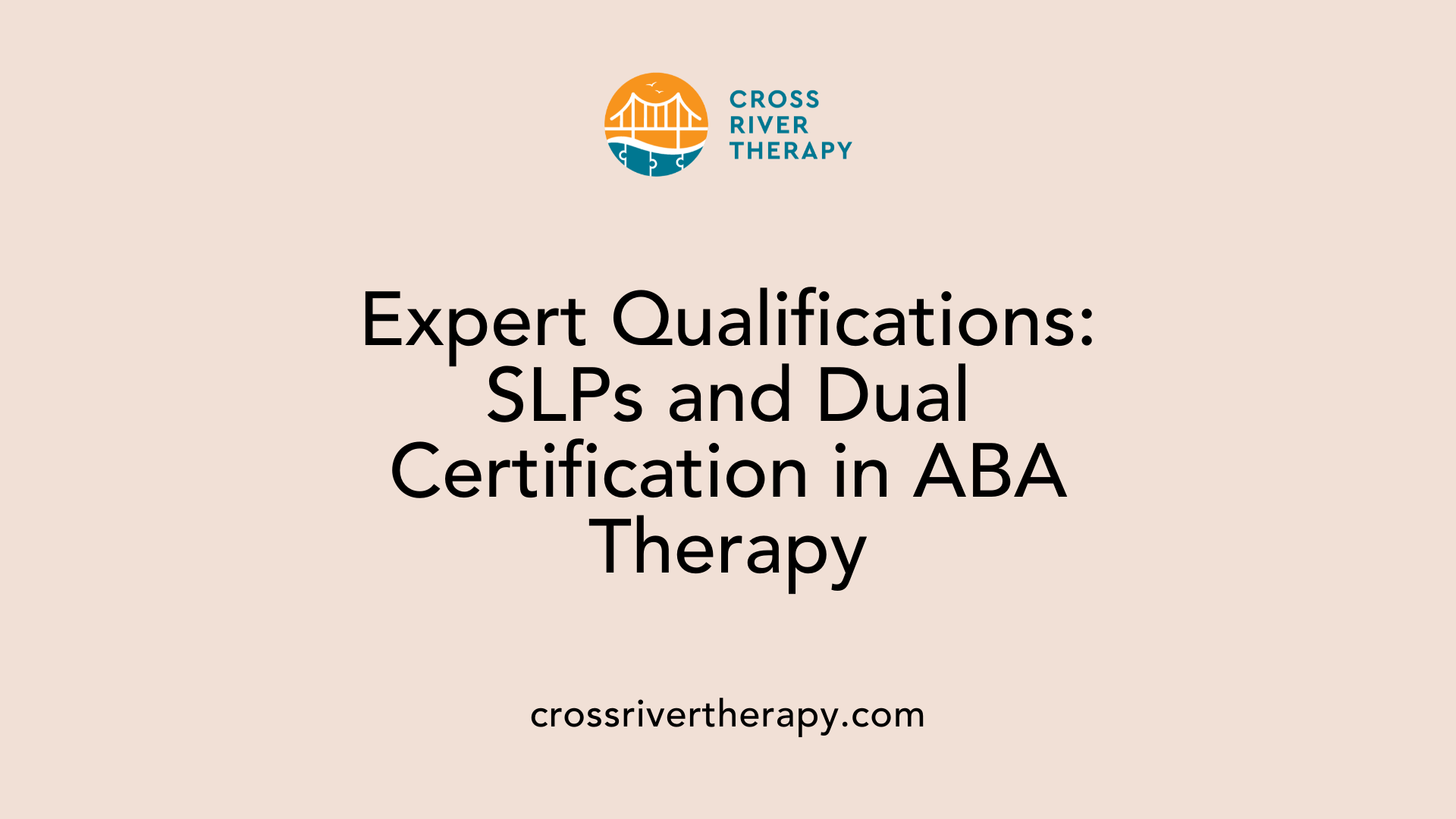
What qualifications do speech-language pathologists (SLPs) need in ABA therapy?
Speech-language pathologists (SLPs) possess specific qualifications that empower them to excel in their field. They typically hold a master's or doctoral degree in speech-language pathology, along with appropriate state licensure. Their extensive training includes expertise in communication disorders, which are crucial for addressing the needs of individuals with autism.
Can speech-language pathologists (SLPs) provide ABA therapy?
SLPs can provide Applied Behavior Analysis (ABA) therapy if they hold dual certification as an SLP-CCC and a Board Certified Behavior Analyst (BCBA). While SLPs primarily concentrate on treating communication and swallowing disorders, BCBAs employ ABA techniques to tackle behavior and learning challenges, particularly in children with autism. The collaboration between SLPs and BCBAs can enhance client outcomes, especially concerning communication skills. This integration allows for more holistic treatment, utilizing the strengths of both approaches to benefit children on the spectrum. A unified understanding of both fields is essential for fostering effective teamwork and providing robust support for clients.
Why is dual certification important?
Having dual certification as both an SLP and a BCBA is vital as it promotes family-centered practices, actively involving families in the therapy process. Engaging caregivers and families enhances the likelihood of improving children's communication outcomes. This comprehensive understanding not only helps in aligning treatment goals but also ensures that effective methodologies are implemented consistently across therapies. Ultimately, the combination of ABA techniques and speech-language strategies leads to better developmental outcomes for children with autism.
Clarifying Misconceptions in Therapy Integrations
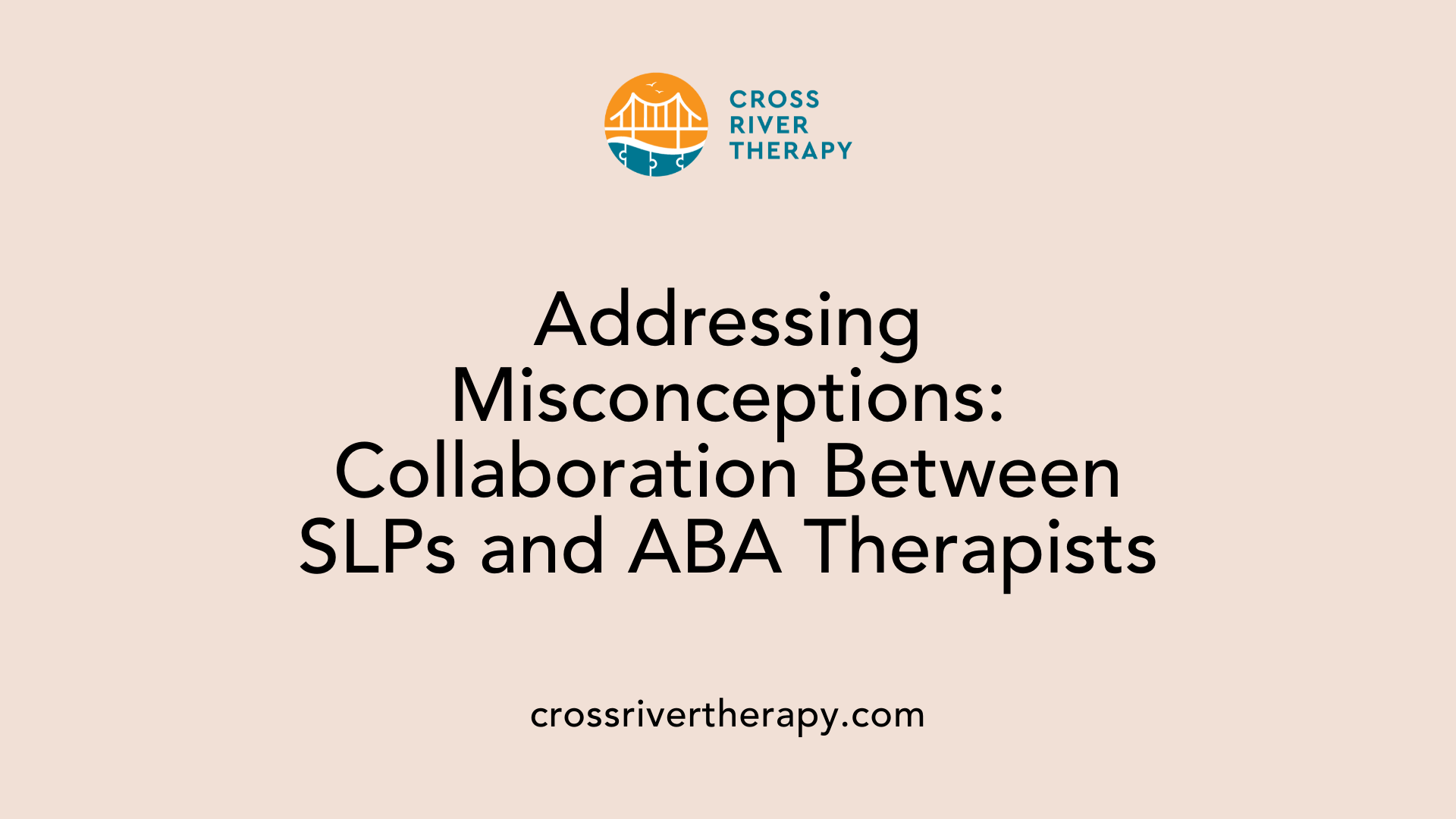
What are some misconceptions about the relationship between SLPs and ABA therapy?
Misconceptions about the relationship between Speech-Language Pathologists (SLPs) and Applied Behavior Analysis (ABA) therapy often stem from their individual methodologies and training backgrounds. SLPs primarily advocate for developmental and social-pragmatic approaches, which focus on enhancing communication in a naturalistic context. In contrast, ABA is centered around behavior modification through reinforcement techniques.
Some SLPs express concerns regarding the compliance-driven nature of ABA practices, fearing they may lead to negative outcomes such as trauma for the child and insufficient attention to the root causes of behavior issues. Critics argue that ABA's traditional methodologies may not adequately foster natural communication skills, potentially overlooking opportunities for authentic interactions.
There are also discussions surrounding the ethical implications of ABA, particularly regarding its approaches that could be viewed as coercive. Misunderstanding these varied philosophies may contribute to tension between practitioners. Recognizing how both therapies can coexist and complement each other is essential for effective collaboration.
| Therapy Approach | Focus | Common Misconceptions |
|---|---|---|
| SLPs | Developmental & social skills | Prioritizes only speech sound production |
| ABA | Behavior modification | Ignores individual communication needs |
| Collaboration | Integrates techniques from both fields | Reduces effectiveness of either therapy individually |
This understanding can help in breaking down barriers between SLPs and ABA professionals, allowing for a more integrated approach to improve outcomes for children with autism.
The Impact of ABA Therapy on Speech Development
How does ABA therapy affect speech development in autistic individuals?
ABA therapy greatly impacts speech development in autistic individuals by utilizing behavior modification techniques that facilitate communication skills. Key strategies employed in ABA include "manding", where children learn to request their needs, fostering a more functional use of language.
The structured environment of ABA helps break down complex skills into manageable parts, making it easier for children to learn and understand new language concepts. Incorporating principles such as shaping—where behaviors are gradually refined—aligns well with speech therapy practices focusing on accurate speech production.
Integration with speech therapy
Integrating ABA with speech therapy creates a more holistic approach for addressing communication difficulties. SLPs work alongside ABA practitioners, evaluating a child's strengths and weaknesses and formulating personalized treatment plans. They bring critical expertise in language acquisition and comprehension, ensuring interventions-target effective communication goals.
When both therapies are implemented together, children tend to demonstrate better developmental outcomes. The complementary nature of the two methods allows for ongoing evaluation and adjustment, enhancing engagement and skill transfer across environments.
Parental involvement benefits
One of the greatest boosts to the effectiveness of ABA and speech therapy comes from active parental involvement. Educating families about communication strategies encourages them to reinforce skills at home. This consistency is crucial for meaningful progress, as communication practices embedded in daily activities help solidify learned skills and foster a supportive environment for growth. By working as a team, parents, SLPs, and ABA therapists can create a solid foundation for successful speech development in children with autism.
Integrating Speech Therapy and ABA for Holistic Support
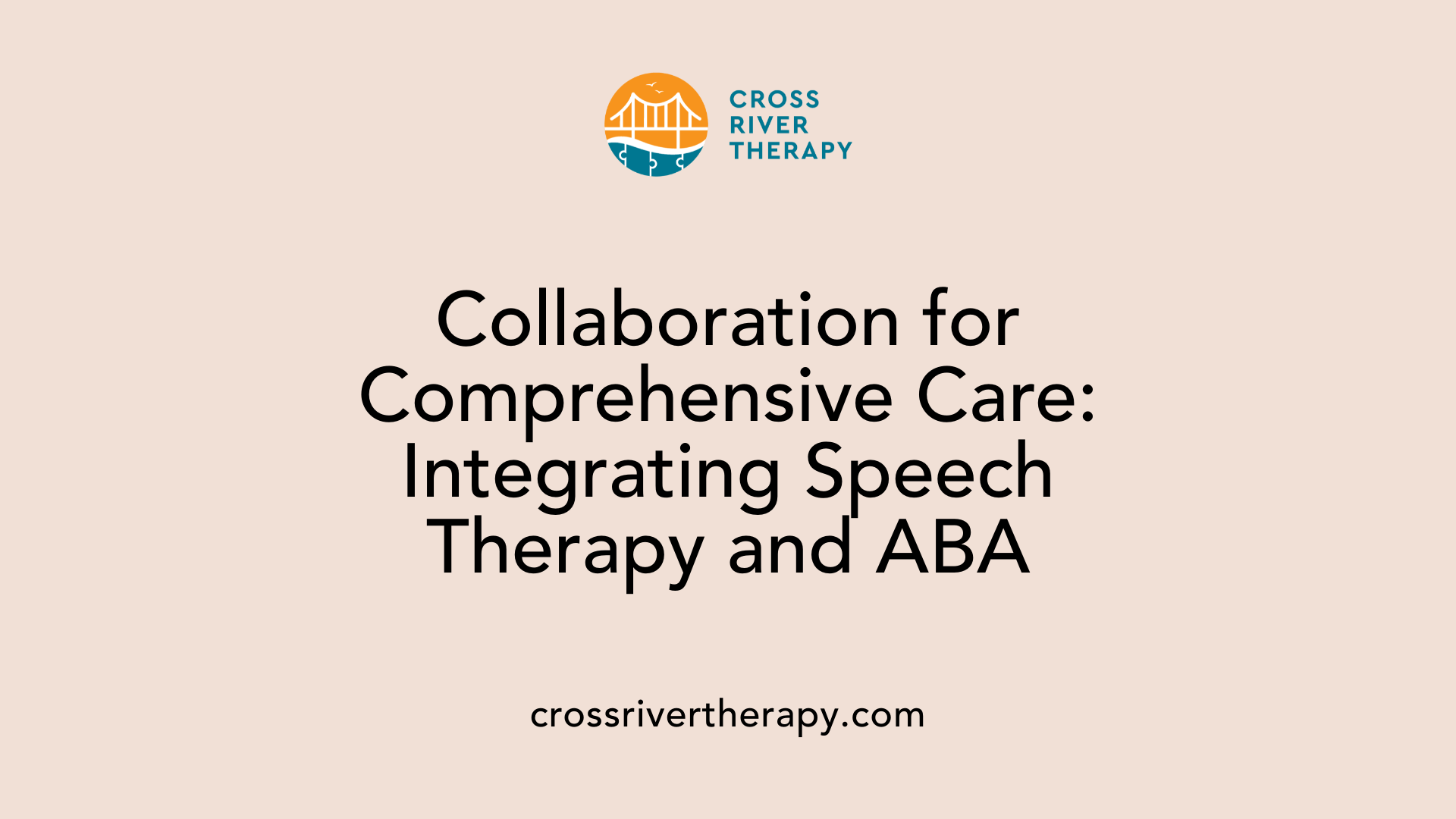
How do speech therapy and ABA therapy integrate to support autistic children?
Speech therapy and ABA (Applied Behavior Analysis) therapy integrate to support autistic children by collectively addressing both communication and behavioral needs. This collaboration ensures a comprehensive approach that draws upon the unique strengths of each discipline.
Collaboration Between Therapies
Speech-Language Pathologists (SLPs) focus on developing effective communication strategies tailored to individual needs. They enhance social skills, teaching children how to engage with peers, read nonverbal cues, and express their needs clearly. Meanwhile, ABA practitioners utilize techniques like reinforcement and behavioral analysis to shape communication behaviors, reinforcing positive social interactions and managing challenging behaviors.
Addressing Complex Needs of Autistic Children
The integration of SLPs into ABA teams allows for the identification and management of co-occurring conditions often found in autistic individuals. For example, SLPs may incorporate alternative communication methods like AAC systems, facilitating expression beyond verbal communication. This collaborative effort ensures a tailored response to each child’s complex needs, optimizing therapeutic outcomes.
Reinforcement of Social Skills
Promoting social skills is paramount in this integrated approach. SLPs and ABA therapists work alongside each other to reinforce behaviors such as sharing interests or initiating conversations. This not only aids in the development of social competence but also supports emotional wellbeing, as positive interactions foster a sense of belonging. Together, they create a unified strategy, ensuring children receive consistent messages in different contexts, which ultimately improves their social engagement and learning experiences.
Exploring Methodologies of SLPs and ABA Therapists
What are the different methodologies used by speech pathologists and ABA therapists?
Speech pathologists (SLPs) and ABA therapists employ distinct methodologies to foster communication development and modify behaviors in children with autism.
Speech Therapy
SLPs focus on evaluating and treating communication disorders. The techniques they utilize include:
- Articulation exercises: Aimed at improving the clarity of speech sounds.
- Oral motor activities: These help strengthen the muscles used in speech.
- Storytelling and play-based interactions: Engaging methods to enhance language skills in a natural context.
ABA Therapy
In contrast, ABA therapy centers on behavior modification using strategies like:
- Positive reinforcement: Encouraging desired behaviors through rewards.
- Discrete trial training: Structured teaching sessions that break tasks into manageable steps.
- Functional communication training: Aimed at teaching children how to effectively express their needs.
How do these methodologies complement each other?
The integration of SLP and ABA methods often leads to improved outcomes. For instance, SLPs can enhance ABA's focus on behavior by addressing language development through various communication modes, such as sign language or picture communication systems.
Integrated care for communication and behavior
Both approaches prioritize collaboration, enabling consistent care that not only targets skill development but also supports social interactions. By combining these techniques, practitioners address overlapping areas of communication and behavior, creating a holistic treatment plan tailored to each child's unique needs.
The Evolution of Autism Treatment and Inclusion
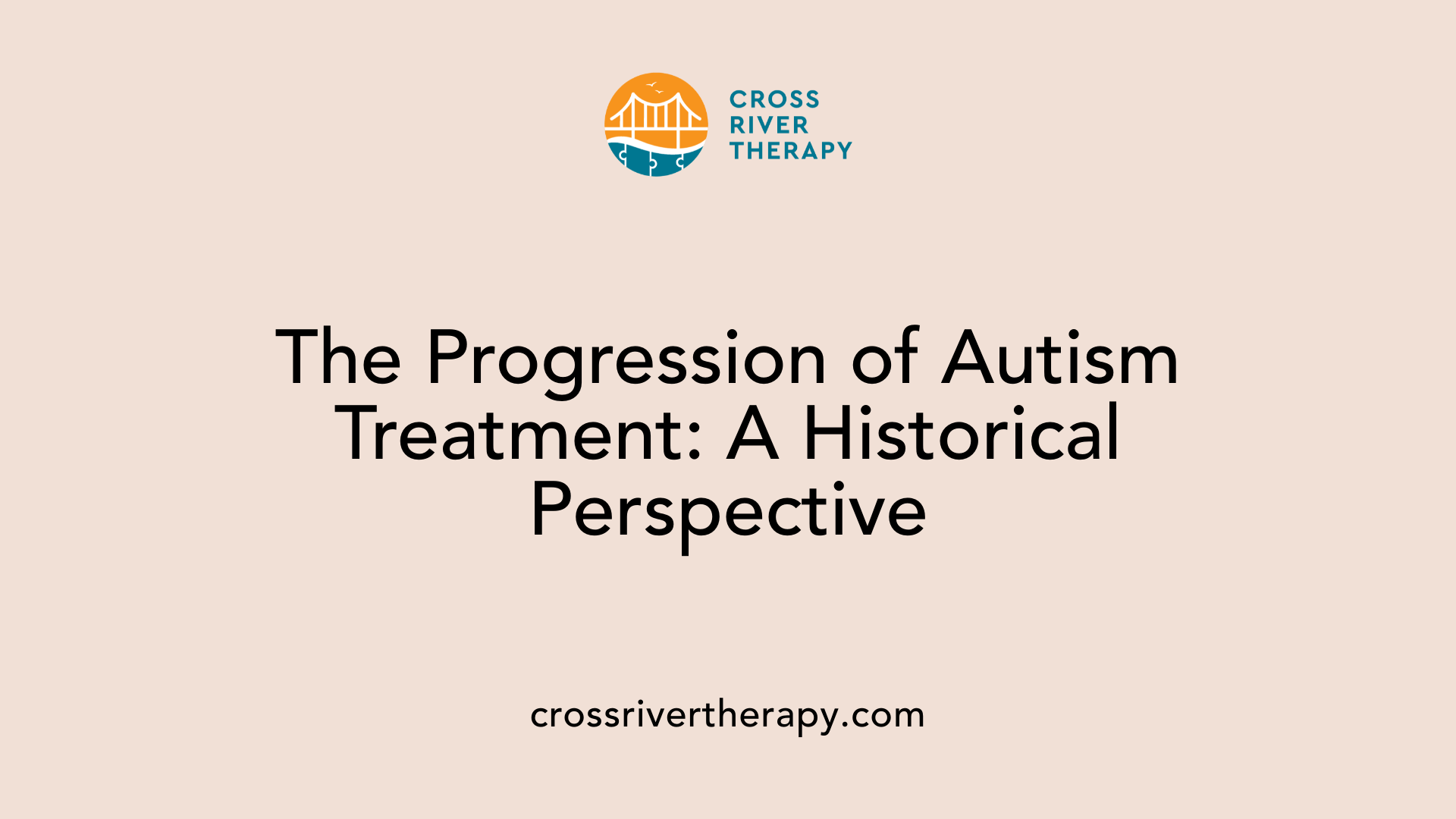
Historical context of autism treatment
Before the 1970s, individuals with autism often faced institutionalization, reflecting societal misunderstanding and stigma surrounding the condition. Treatments were limited and often ineffective, leading to significant developmental setbacks for those affected.
Shift towards inclusive practices
In the late 20th century, a significant shift occurred, propelled by changes in public policies and a better understanding of autism. Education laws, particularly the Individuals with Disabilities Education Act (IDEA), emphasized the necessity for inclusive education. This framework not only provided autistic children with access to mainstream educational settings but also fostered an environment geared towards individualized support.
Role of IDEA
IDEA played a pivotal role in promoting inclusive practices by mandating that schools accommodate children with disabilities, including autism. This ensured access to tailored educational programs, thereby laying the groundwork for more integrated approaches to treatment. The focus moved towards collaboration among specialists like Speech-Language Pathologists and behavior analysts, aiming to provide comprehensive support for children with autism.
Conclusion
The collaboration between Speech and Language Pathologists and ABA therapists offers a dynamic framework that enhances autism treatment. By integrating communication strategies with behavioral analyses, both professionals can address a comprehensive spectrum of needs for individuals with autism. Through joint efforts, these therapies foster improved communication skills, social interactions, and overall developmental progress, ultimately improving the quality of life for individuals and their families. This collaboration underscores the importance of continued research, advocacy, and personalized care approaches to further enrich therapeutic outcomes.
References
- When SLP Meets ABA - The ASHA Leader
- Applied Behavior Analysis in Speech-Language Therapy
- The Truth about ABA & Speech-Language Therapy
- Integrating ABA and Speech Pathology - ASAT Online
- Understanding Speech Therapy & ABA Terms - TherapyWorks
- Autism and speech therapy
- ABA and Speech Therapy Collaboration - Powerback Pediatrics
- The Difference Between ABA and Speech Therapy for Autistic ...
- ABA and Speech Therapy: Comparing Two Therapeutic Concepts



